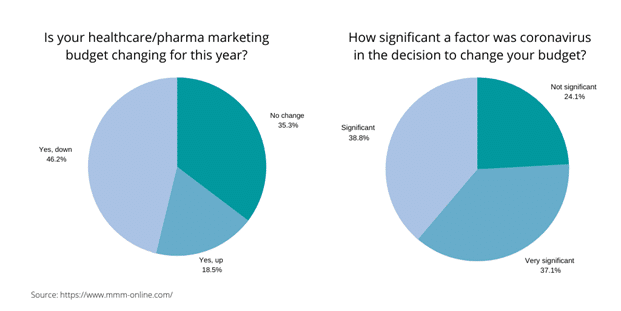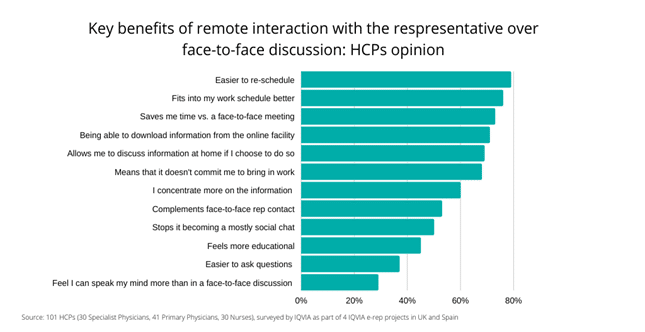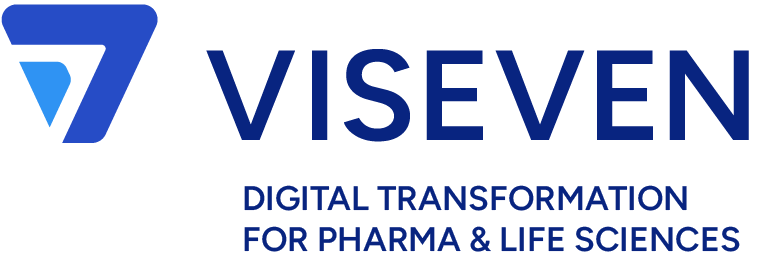5 Trends in Healthcare Digital Agency World to Watch in 2021

Amid all ambiguity, 2021 is eventually coming. Everything flipped on the head when the unknown virus broke into our lives at the beginning of 2020. All the predictions made at the end of 2019 have proved remote. However, a digital agency should have a comprehensive view of what to expect in the near future. There is no guarantee that something unpredictable will not break in again, but anyway, let’s try to outline what digital agencies should focus on in 2021, based on the current situation.
The time has come. Let’s visualize the pharma marketing challenges in 2020
The COVID crisis and the shift to remote working models
We look back on 2020 as one of the most challenging years for the pharma. The time when the coronavirus has put pharmaceutical companies to the test. The turmoil began with the cancelation of medical congresses, commercial events, and the shift to remote working models. The pandemic has severely disrupted the routine of life sciences companies where in-person visits had always been prioritized. When this strategy started to fall apart, pharma marketers had to adapt, without much readiness, to new market realities.
Pharma companies had to find alternative ways to stay in touch with the HCPs and customize their processes of content production to remote communication channels. Things of this nature always require new models of work and readiness to adjust quickly and cost-effectively. The main obstacles to ensuring the effective transition to new operating models have become:
- lack of time
- lack of previous experience
In other words, the time has come to master remote tools to communicate with HCPs.
Сhasing the effective digital solutions
In 2020, the pharmaceutical business is a front and center as the coronavirus pandemic has put it under the spotlight. A majority (46.2%) of healthcare marketers said they’re cutting budgets for 2020, vs. 18.5% reporting an increase. 75.9% reported that coronavirus was either a significant or very significant factor in those decisions.

This way, life sciences companies have not squandered their marketing budgets in 2020. They rather demonstrated willingness to invest in easily deployable and cost-effective digital solutions.
Thus, the time has come for creative agencies to rethink the traditional marketing approaches and deliver only advanced and high-quality solutions to the table.
Growing need for content
It is now established that pharma expects new modes of work and the ability to pivot to any business realities on the fly. Now creative agencies are divided into two tribes – those offering digital innovations and those who work under an old design.
This problem was exacerbated by the need to tread the path of omnichannel that is today, slowly but surely mastering the largest players on the pharmaceutical market. During the pandemic, the whole omnichannel thing didn’t turn into just “cool stuff”, but instead proved its applicability.
The problem is that the omnichannel strategy requires a large amount of content. Moreover, this content should be delivered to the customer flexibly, rapidly, and efficiently. For a top-notch creative agency it means to help pharma companies streamline their process and complex workflows and introduce innovations in the content development process.
The time has come to offer something more than just content.
5 trends that define 2021 for creative agencies
1. Agile processes
Agility defines pharma marketing in 2021. We wouldn’t want this word to become the ubiquitous “new normal”, however, companies with agile content supply chains can seize growth opportunities and recognize potential risks faster. According to statistics, nearly 80% of healthcare executives say they need to be more agile, but only 30% are familiar with agile innovation.
The thing is pharma is a regulated and complex ecosystem where each piece of content needs to go through the rounds of approvals before it’s finally ready to publish. The challenges the pharma industry is facing today require streamlined workflows, revised content supply chain and сonsistent processes within the team of content creators.

What makes a creative agency as agile as it could be? Agencies that are constantly enhance their content creation processes becoming more agile. Three working models that set the tone for agility are:
- agile teams
- agile digital assets
- agile content supply chain
An equally important link adding agility in content creation processes is the availability of technological advantage, to deliver content more flexibly. The right content authoring solution ensures that interactive content can be created from scratch, localized, and approved in a few clicks. Moreover, it helps respond, pivot, and market faster and better than the competition. This provides flexibility needed to survive the current pharmaceutical marketing environment.
2. The question of loyalty
This trend doesn’t sound like something new, however, the COVID-19 in many ways has opened our eyes to the problem of disconnected communication between pharma enterprises and patients. This applies to both people who need primary care and patients with chronic diseases who cannot just “stay home to be healthy”. According to a survey, fielded prior to one of the first weeks of significant impact of the pandemic in the U.S., 73% of respondents said they feel vulnerable to COVID-19, yet just 36% said they had discussed those concerns with their healthcare providers, vs. 58% who said they had talked to “others with their condition” about it.
People with chronic diseases talking about the effect of the lockdown on their healthcare routine:
“When I was pregnant, there was a lack of information about prenatal care from my healthcare provider. When all the media with one voice advised us to stay away from hospitals, I felt that my condition is poorly managed. I couldn’t get a timely consultation from my doctor.”
Another patient adds:
“Patients with mental health issues might feel more vulnerable to the lockdown. The key challenges were to do daily exercise, and maintain daily health care. I felt a shortage of medications because I couldn’t get in touch with my doctor.”
This disconnection leads to loss of brand loyalty and vast sums spent on patient care when desired outcome is not achieved.
The next challenge is to engage patients into active communication with healthcare providers. To be patient-centered, pharma companies need to support omnichannel models providing an inclusive approach that helps to get better treatment outcomes and engage patients into active communication with healthcare providers.
Explore a real-world case proving that omnichannel technologies improve the quality of patient care and empower patient-centricity driven by productive communication tools.
3. Powering through the coronavirus crisis
Unfortunately, we won’t wake up from COVID-19 in 2021 – not this year. Coronavirus will continue to affect pharma in a number of ways, shifting their focus to digital initiatives and forcing more collaboration between organizations. Collaborative approaches and cross-enterprise collaboration will help digital agencies to tackle global challenges by joint efforts. Moreover, the right partnership provides additional flexibility that can sometimes come in handy and opens up the possibilities and fuels greater achievement to augment your own capabilities. Therefore, in 2021, we recommend relying on a mutually beneficial partnership to achieve common goals.
Choose the type of relationship that will meet your business’s needs – open up Viseven partnership programs.
4. Remote is here to stay
When marketers rushed to implement remote instruments into their work, it opened up a new perspective on number of tools that were previously ignored. This list can include telemedicine, self-detailing and many others instruments to explore patients without direct exposure. These solutions are becoming mainstream in 2020. In 2021 the demand will only grow.
We still have no clear forecasts about the epidemic’s end. The shift toward remote models was fully appreciated by doctors because of the flexibility they give. These tools have proved to be those that can reduce sales costs and increase the efficiency of communication – which is relevant at any time.
The pandemic may shift pharma sales to remote mode permanently because of the flexibility of this solution. Judge for yourself:
- it is not tied to the doctor’s schedule
- provides great coverage of the HCPs in remote regions
- stimulates value-based conversation between the medical representative and the doctor
Benefits of Remote communication: HCPs’ opinion

5. Focus on video
In the new decade, video and visualized materials will be highly effective forms of communication with target audience. Have you noticed that lately, instead of searching for information on Google, you are looking for it on YouTube? We all consume online videos daily but now we more often prefer it over statistics or plastic content.
Today, marketers are more likely to create a video for their marketing campaigns. In 2020, 92% of marketers say that video is an important part of their marketing strategy.

Visualized information is always eye candy. Even treatment procedures and other medical content accompanied by video stimulate more audience engagement. With the growing popularity of visualized educational medical materials, video is becoming a powerful marketing tool for HCP engagement. It is also highly trackable and allows for consult and treat patients without immediate access to hospitals or healthcare facilities.
Wrapping up
2020 was like a lucid dream. However, it opened our eyes to many things. It is not only the importance of handwashing but also the need to introduce flexible technologies and establish work processes in fields that regularly take care of our health. We’ve learned the lesson about the importance of having a couple of alternative tools for HCPs engagement. The importance of introducing omnichannel technologies into the healthcare sector, not as an accessory, but as a tool that helps patients to manage their health better.
This challenging time sets even more stringent requirements for creative agencies. That’s why they currently rethinking their strategies to bring even more products to the market. The time has come to improve digital asset flow and create content that will be easily adapted to any communication channel and any device.
The key to succeeding? Flexibility, and there cannot be too much of it in the 2020s. With a proper content authoring solution providing for agile, reusable content, you’ll always feel confident about your agency regardless of any surprises that next year may bring us. Contact us and explore a more efficient approach to creating content.



